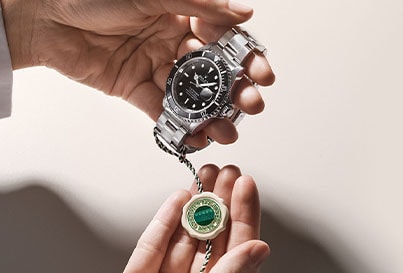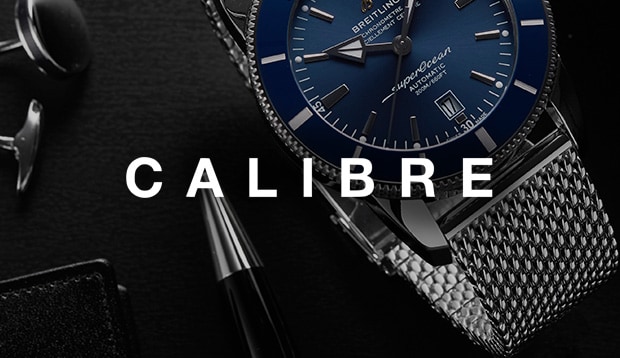-
SALE
Sale JewellerySale WatchesBy Price
-
Diamonds
By Category
-
Engagement
By Category
-
Weddings
Featured
- Jewellery
By CategoryBy Metal TypeBy GemstoneBy BrandBy Edit- Watches
By CategoryBy CollectionBy Luxury BrandBy Designer Brand- Rolex
FeaturedBy Collection- Rolex Certified Pre-Owned
- Brands
FeaturedBrands A-Z- Gifts
By CategoryBy PriceBy Popular Brand- Pre-Owned
By Brand- Sell Your Watch
Sell your watchWe will expertly assess your watch and offer you
a competitive and accurate valuation for the
watch you wish to sell to us.Free Instant Valuation
Drop off at any Showroom
Unrivalled Knowledge & Expertise- Editorial
- Jewellery
- Shop by Category
- SALE
- Diamonds
- Engagement Rings
- Weddings
-
Jewellery
- Back
- Jewellery Offers
- Shop All Jewellery
- Jewellery Home
- By Category
- By Metal Type
- By Gemstone
-
By Brand
- 886 by The Royal Mint
- Amor
- Bijoux Birks
- BOSS
- Calvin Klein
- Chopard
- Emporio Armani
- Fabergé
- FOPE
- FRED
- Georg Jensen
- Goldsmiths
- Gucci
- Jenny Packham
- Kiki McDonough
- Lauren By Ralph Lauren
- Mappin & Webb
- Marco Bicego
- MARIA TASH
- Messika
- Michael Kors
- Olivia Burton
- Pasquale Bruni
- Pomellato
- Repossi
- Roberto Coin
- Skagen
- Susan Caplan
- SUZANNE KALAN
- SWAROVSKI
- Ted Baker
- THOMAS SABO
- Tommy Hilfiger
- By Edit
-
Watches
- Back
- Watch Offers
- Shop All Watches
- Watches Home
- By Category
- By Collection
-
By Luxury Brand
- Rolex
- Rolex Certified Pre-Owned
- BALL
- Bamford
- Baume & Mercier
- Bell & Ross
- Blancpain
- Breitling
- Bremont
- Cartier
- CHANEL
- Chopard
- DOXA
- Frederique Constant
- Girard-Perregaux
- Glashütte Original
- Grand Seiko
- Gucci
- Hublot
- ID Genève
- IWC Schaffhausen
- Jaeger-LeCoultre
- Junghans
- Keris
- Longines
- MeisterSinger
- Montblanc
- Nivada Grenchen
- NOMOS Glashütte
- NORQAIN
- OMEGA
- Oris
- Panerai
- Piaget
- Rado
- RAYMOND WEIL
- TAG Heuer
- TUDOR
- Ulysse Nardin
- ZENITH
- By Designer Brand
- Rolex
- Rolex Certified Pre-Owned
-
Brands
- Back
- View All Brands
-
A-Z
- Rolex Watches
- Rolex Certified Pre-Owned
- 886 by The Royal Mint
- Accurist
- Amor
- Arnold & Son
- BALL
- Bamford
- Baume & Mercier
- Bell & Ross
- Blancpain
- Bijoux Birks
- BOSS
- Breitling
- Bremont
- BVLGARI
- Casio
- Calvin Klein
- Cartier
- Certina
- CHANEL
- Chopard
- Citizen
- Czapek
- DOXA
- Emporio Armani
- Encelade 1789
- Fabergé
- FOPE
- FRED
- Frederique Constant
- Garmin
- Georg Jensen
- Gerald Charles
- Girard-Perregaux
- Glashütte Original
- Goldsmiths
- Grand Seiko
- G-SHOCK
- Gucci
- Hamilton
- Hublot
- ID Genève
- IKEPOD
- IWC Schaffhausen
- Jacob & Co
- Jaeger-LeCoultre
- Jenny Packham
- Keris
- Kiki McDonough
- G-SHOCK
- Lauren By Ralph Lauren
- Longines
- Louis Erard
- Mappin & Webb
- Marco Bicego
- MARIA TASH
- Maurice Lacroix
- Michael Kors
- Messika
- Montblanc
- Nivada Grenchen
- NOMOS Glashütte
- NORQAIN
- Olivia Burton
- OMEGA
- Oris
- Panerai
- Parmigiani Fleurier
- Pasquale Bruni
- Piaget
- Pomellato
- QLOCKTWO
- Rado
- RAYMOND WEIL
- Repossi
- Roberto Coin
- Rolex
- Rolex Certified Pre-Owned
- Seiko
- Skagen
- Susan Caplan
- SUZANNE KALAN
- SWAROVSKI
- TAG Heuer
- Ted Baker
- THOMAS SABO
- Tissot
- Tommy Hilfiger
- TUDOR
- Ulysse Nardin
- Vivienne Westwood
- William Wood Watches
- WOLF
- ZENITH
- Gifts
-
Pre-Owned
- Back
- Shop Pre-Owned Watch Sale
- Shop All Pre-Owned
- Pre-Owned Home
- By Category
-
By Brand
- Rolex Certified Pre-Owned
- Pre-Owned Patek Philippe
- Pre-Owned TAG Heuer
- Pre-Owned Cartier
- Pre-Owned Jaeger-LeCoultre
- Pre-Owned Breitling
- Pre-Owned OMEGA
- Pre-Owned Longines
- Pre-Owned Tudor
- Pre-Owned IWC
- Pre-Owned Panerai
- Pre-Owned Blancpain
- Pre-Owned Breguet
- Pre-Owned Chopard
- Pre-Owned Rado
- Pre-Owned Vacheron Constantin
- Pre-Owned Zenith
- Sell Your Watch
- Editorial
- My Account
- Wishlist
- Store Finder
- Book an Appointment
- Help & Support
Goldsmiths Guide to Watches
Watch Movements Guide
In the broadest terms, there are basically two kinds of watch - those with quartz movements powered by batteries; and those with mechanical movements that are powered by energy generated by the motion of your arm, or by winding the crown.
Batteries in quartz watches will need replacing after a period of time (we recommend a battery change every two to three years), but the watch should maintain its accuracy until the battery starts losing its charge. Quartz movements are a lot cheaper to produce than their mechanical equivalents, which is why a lot of fashion watches and watches in the lower price brackets are usually powered by quartz movements.
Mechanical movements don't have batteries - instead they have a barrel (a small cylindrical box) that contains a mainspring (a thin metal coil). In an automatic mechanical watch, the swinging of a rotor attached to the movement winds the watch, creating tension in the mainspring, which becomes the power source. The same process occurs in a hand-wound watch, only the winding has to be done by hand by turning, or winding the crown.
During the 1970s and 1980s, quartz became very popular and people stopped buying mechanical watches, but over the last 25 years there has been a huge resurgence in mechanicals. Today, mechanical watches have more kudos than quartz watches. They're considered statements of taste and discernment - and as a result, they usually cost more than their quartz equivalents.

Tip: if you're not sure whether a watch is quartz or mechanical, look at the seconds hand. If it ticks, it's quartz; if its sweeps, it's mechanical.
Magnetism
If a magnetic field is especially strong, it influences the movement of a watch. For a Quartz watch, a high magnetic field will slow it down for a few seconds, however away from the magnetic field it will work normally again. In a mechanical or automatic watch, the magnetisation will disrupt the timing element and make the hair spring of the movement stick, which will result in the altering of the watches performance.
For a watch to be magnetised, it must be in contact with quite a strong magnetic field.
Tolerances
Automatic and mechanical watches are not exact, they keep time within a certain tolerance. A tolerance is the maximum amount of seconds the timepiece may gain or lose, per day.
Tolerances are different for each watch brand, and in some cases the different models across a brand. For further information regarding the tolerance of the model you are interested in purchasing or have purchased, our brand representatives in our showrooms would be happy to assist you. Alternatively, please refer to your owner manual provided with your new purchase.
© 2025 Goldsmiths
Goldsmiths is a trading name of Watches of Switzerland Company Limited. Registered Office: Aurum House, 2 Elland Road, Braunstone, Leicester, LE3 1TT, Registered in England and Wales, Company number 00146087. Registered VAT Number 834 8634 04. Watches of Switzerland Company Limited acts as a broker and not a lender and offers finance from Secure Trust Bank PLC trading as V12 Retail Finance and PayPal UK Ltd, 5 Fleet Place, London, United Kingdom, EC4M 7RD trading as PayPal Credit. Watches of Switzerland Company Limited is authorised and regulated by the Finance Conduct Authority. Our registration number is 308710. *Credit is provided subject to affordability, age and status. Minimum spend applies. Terms and Conditions apply. UK residents only. Not all products are regulated by the Financial Conduct Authority and FOS protection will not be extended to unregulated agreements. Please note the Consumer Credit Act states that should your purchase / loan amount cost more than £30,000 you will not be covered under Section 75 of the Consumer Credit Act.
*Next day delivery available on most items. See product pages for more information.








